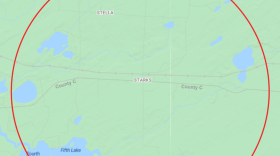PFAS chemicals are an emerging contaminant of concern.
In Oneida County, it’s been found in drinking in Rhinelander and the Town of Stella.
Last year, the EPA set a new standard of four parts per trillion, which is much lower than previous health guidelines in the state.
There are about 90 public water systems in the state that don’t meet that standard.
“We've targeted them with the funding that's available through the Bipartisan Infrastructure Law for them to look at ways to reduce PFAS in their drinking water system,” said Mark Pauli. He’s the Wisconsin DNR drinking and groundwater supervisor for the Northern Region.
He says, as an emerging contaminant, there’s still a lot to learn about PFAS.
Pauli wants people to be better educated about what is known.
“Not to raise any hype about it, but the more people understand and have knowledge about it, the better decisions that they can make about their drinking water,” said Pauli.
This includes knowing where PFAS comes from.
While they are used as an industrial compound, they’re also found in a lot of everyday products the general public uses.
PFAS have been used in stain resistant, non-stick, or heat resistant products.
“I think the biggest thing is to understand what is the products that they're using, and to try to reduce their PFAS footprint. There are alternatives that are out there and available,” said Pauli. “The big thing is consumerism, to try to reduce the footprint of PFAS in the environment would be to try to use alternative products instead of those that contain PFAS to reduce the potential hazards to the environment and public health.”
Pauli will be talking about PFAS and groundwater at Science on Tap Minocqua on Thursday, February 6.
It’s at 6:30 p.m. at Rocky Reef Brewing Company in Woodruff.
You can also stream it online.













